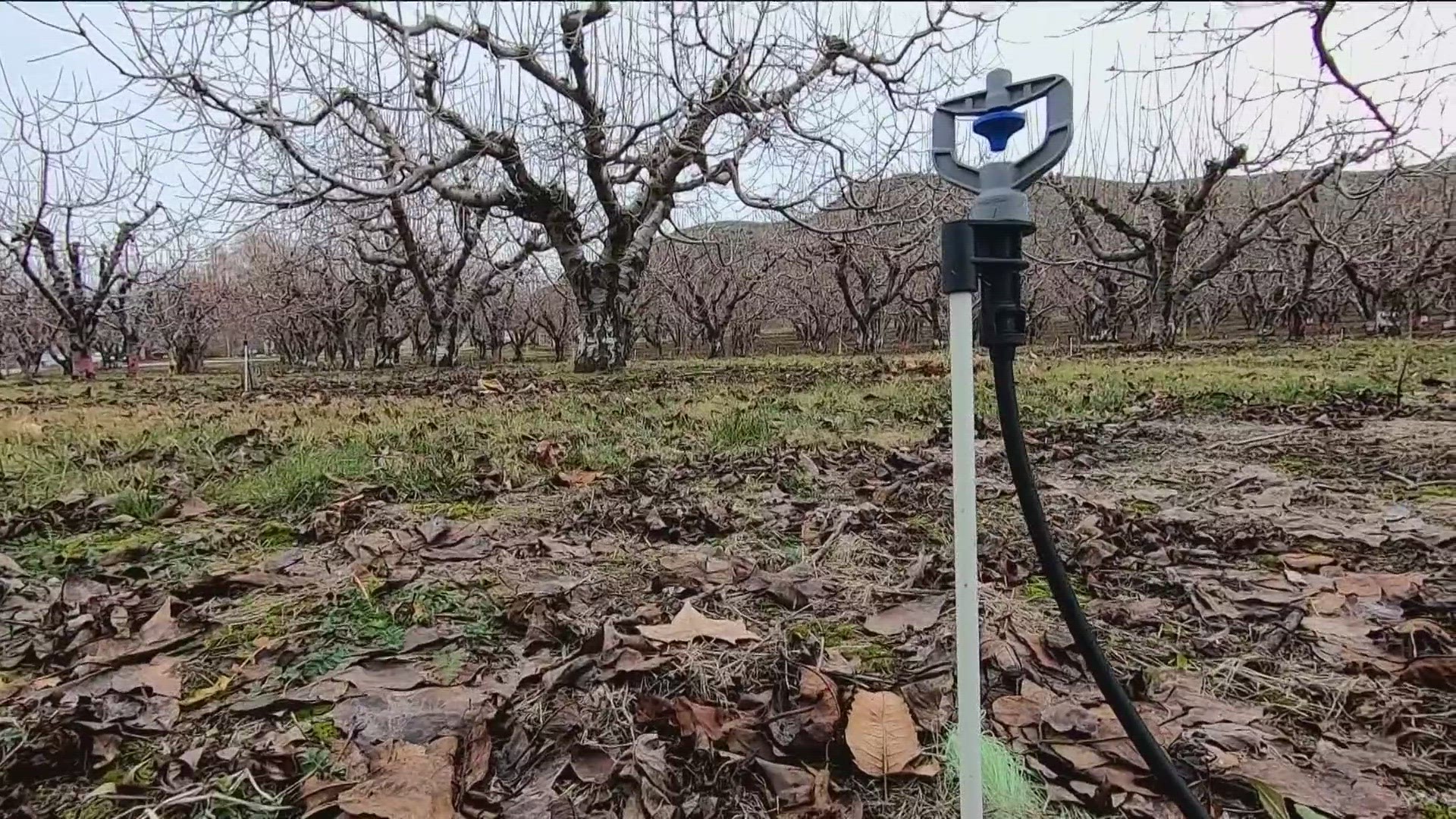BOISE, Idaho — A crucial element of Idaho's water supply, snowpack, is trending down. A Dartmouth study said since the 80's, the Northwest lost 5% to 10% of snowpack, each decade. They attribute the decrease to a changing climate.
Southwest Idaho gets about 12 inches of moisture each year, including both rain and snow.
"But we would be a complete desert without the without the snowpack. It's everything," said Lance Phillips, owner and operator of Gem Orchards in Emmett.
Snowpack in Idaho, Oregon, and Washington is essential to a successful irrigation and farming season. The snowmelt feeds into our reservoirs and our reservoirs are like a savings account. Ideally, the water will be there when we need it. The runoff in reservoirs flows through rivers and canals to homes and farmland.
"I've been farming and been an orchardist since I was 5 years old where we had gladiolas and chickens when I was a kid. So I have been orcharding now for just over 37 years," Phillips said.
"If I could make a living and give my fruit away, there is nothing better than having someone come out to the orchard, pick the fruit that I have worked so hard for for 9 months, and see the joy on their face....The fruit of my labor, so to speak, and it is literally fruit," Phillips said.
Phillips moved to southwest Idaho about 25 years ago. During that time, he's seen a lot of variation in the water supply.
"I've seen in the last just couple years that we're getting more moisture in February and March than when we used to get a lot in January and February," he said.
An EPA study said over the past 50 years, more winter precipitation has been falling as rain instead of snow. They expect that trend to continue. Specifically for Idaho, the EPA said the snowpack season is about 40 days shorter.
In dry years, water managers have had to cut the irrigation season short. This most recently happening in Fall of 2021, ending the season about a month early.
KTVB talked to the former Boise River Watermaster, Rex Barrie, that year (2021), "They have got a lot of money invested in these crops and when they can't get the full amount of water that they really need, it puts stress on some of those crops and consequently reduced yield."
According to the University of Idaho, the Gem State is 2nd in the nation for the amount of irrigation water used, only behind California.
Phillips has lived in several areas of Idaho, with different watersheds, "I really like where we're at now. So a good reliable watershed that we have at least 50% to 80% of our water on a regular basis really helps me able to raise and do what I do."
Even with a reliable water source, Phillips switched to a method he has more control over and doesn't waste as much water.
He, like others nearby, uses sprinklers and a drip system to limit the amount of water he loses to the soil or to the air.
"We've changed a lot in going from a lot of flood irrigation to a majority of our farms and ranches in our area, at least are converting to sprinkler and higher efficiency systems, we're seeing canals lined, and how we manage it has had to change," explained Phillips.
Change that may become even more necessary as the snowpack is expected to continue shrinking, across the Northwest, getting increased efficiency our of the supply we do have.
"But, I think all of those evolutions have been great because it allows us to conserve, and extend, and use it with more precision. We may be able to put more of that back towards wildlife benefits and other benefits that help everybody," said Phillips.
While some watersheds are reliable in southern Idaho, they are very dependent on the dams and reservoirs, which is an aging infrastructure. Some dams in the area are approaching 100 years old.
The infrastructure on Lance Phillip's property in Emmett is about 90 years old. The current canal systems and tunnels were built by the Bureau of Reclamation in 1937. Some of the ditches that bring water to farmland are still dirt, which is a less efficient option. The dirt absorbs water as it's transported.
While the changes in water supply we've seen haven't necessitated a widespread shift in infrastructure yet, it's possible we will see increased efficiency become a priority, prompting a change.
Watch more Local News:
See the latest news from around the Treasure Valley and the Gem State in our YouTube playlist:
HERE ARE MORE WAYS TO GET NEWS FROM KTVB:
Download the KTVB News Mobile App
Apple iOS: Click here to download
Google Play: Click here to download
Watch news reports for FREE on YouTube: KTVB YouTube channel
Stream Live for FREE on ROKU: Add the channel from the ROKU store or by searching 'KTVB'.
Stream Live for FREE on FIRE TV: Search ‘KTVB’ and click ‘Get’ to download.

